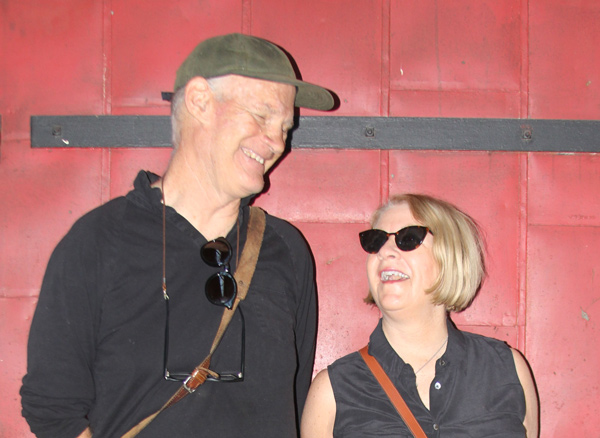In the 1980s, Pam and Steve Nagler founded the performance ensemble Shrimps, which toured nationally and performed locally at venues like LACE. Over the years Shrimps’ iterations included Martin Kersels, Weba Garretson and Ryan Hill. The couple recently retired from 28 years of teaching public high school.
What subjects did you teach?
Pam: I started out teaching English—I’m a writer—and later taught art.
Steve: I taught ceramics, art history, and design. When I started teaching ceramics at Montclair High School, it hadn’t been taught in several years, and the wheels and kilns were from the 1950s and ’60s. I also taught performance in my classes.
What was it like teaching art in public high school?
Steve: We retired from teaching at Montclair High School. It has a high percentage of immigrant families, and it’s being affected by the new administration. This is the era of teaching to the test, which is a virus that has gone crazy. It limits the kind of learning that can happen, and it limits the kind of art program you can have.
Pam: The students that we taught came from artisan-based cultures and had a greater appreciation for art than other groups of students that I worked with. Many of their parents made traditional folk art. They had an appreciation for things that were made by hand.
How does the future look for art programs in public schools?
Steve: It moves in cycles. There is hope. The big push now is in science with the STEM curriculum: science, technology, engineering and math. But there is also a push for STEAM, which includes the arts. We constantly worked to advance that approach.
How did you avoid teaching to the test?
Steve: We responded directly to the students. In the late 1990s, we studied in Mexico to develop fluency in the culture of our immigrant students. We also worked to open our students’ mind to a wider world. Teaching Art History and coaching Academic Decathlon (AD) was part of that. Each year AD had a different theme. It used to focus on different world cultures, but eventually it narrowed. The Trump administration is like the ultimate culmination of navel-gazing and not looking outward.
Pam: I was critical of the AP program because it emphasized rote learning. The AP Studio Art curriculum was the most challenging of the APs because a student had to create their own research and come up with this huge body of work. The studio arts don’t get enough cred, but what’s required is quite formidable and really does advance a student. It’s great preparation for college; it doesn’t matter whether you’re going on in the arts.
What was the most important thing you did for your students?
Pam: I thought of art as the lab. Students could pull in things from other classes, and think about it and make it work in art. I tried to create that kind of openness for them to explore their own directions.
Steve: We weren’t trying to train artists. We worked to teach students to enjoy the process. For many of them, it was their only connection to the arts. The majority wouldn’t go on to do anything in the arts. We tried to encourage curiosity about the world and to make creative choices within their work. We also tried to push them to further their education. That’s ultimately what will make their lives better.


